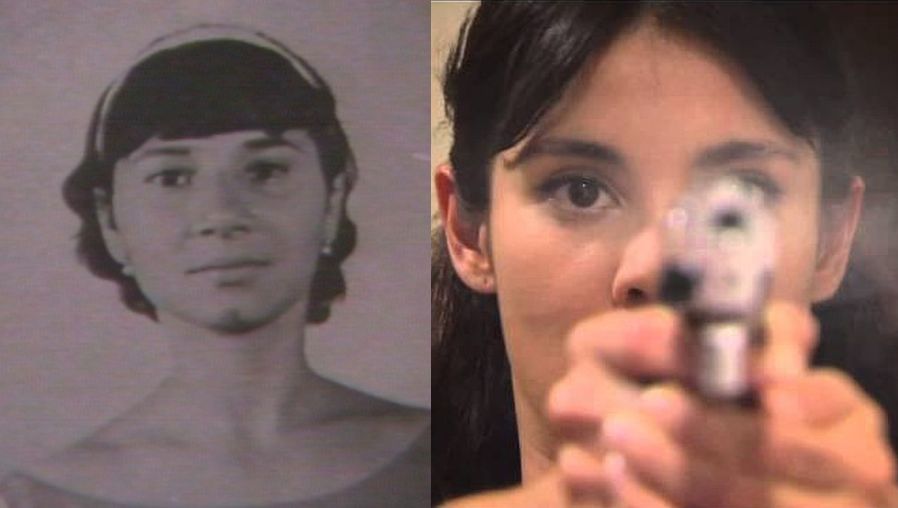 The young Griselda Blanco: real (left) and telenovela versions.
The young Griselda Blanco: real (left) and telenovela versions.
★★★
“Art VAGUELY imitating life.”
It’s probably safe to say La Viuda Negra is “inspired” by the story of Griselda Blanco, rather than anything more. But there are aspects of the telenovela which are surprisingly accurate, especially in the early stages, before things begin diverging for dramatic purposes. [Note: of necessity, what follows will include major spoilers for the TV series] For example, Griselda did move to the city of Medellin with her mother at an early age, not long after the end of World War 2, and it does appear she was involved in criminal activities there, before even becoming a teenager in the mid-fifties.
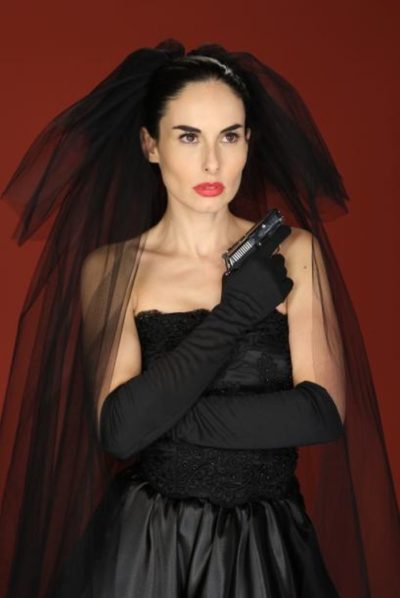 A focus of the early episodes sees Blanco joining a gang, which then kidnaps the scion of a rich local family. In the telenovela, this kick-starts her career, because the victim dies, and his father vows vengeance on Griselda, forcing her to go on the run as a young adult. The reality is perhaps even more astonishing, with her former lover, Charles Cosby, reporting that the kidnap and murder took place when Blanco was only eleven years old. After the boy’s parents refused to pay up, the frustrated gang gave her a revolver and challenged her to shoot him in the head. Challenge accepted…
A focus of the early episodes sees Blanco joining a gang, which then kidnaps the scion of a rich local family. In the telenovela, this kick-starts her career, because the victim dies, and his father vows vengeance on Griselda, forcing her to go on the run as a young adult. The reality is perhaps even more astonishing, with her former lover, Charles Cosby, reporting that the kidnap and murder took place when Blanco was only eleven years old. After the boy’s parents refused to pay up, the frustrated gang gave her a revolver and challenged her to shoot him in the head. Challenge accepted…
It was around this time she also met her first husband, Carlos Trujillo. In real life, he was involved in forging immigration documents; she had three children with him, all of whom would become involved in the drug trade, and suffer violent ends. The same happened to Trujillo, whom Griselda had killed, shortly after they divorced at the end of the sixties. In La Viuda Negra, her first husband, Puntilla, is part of the kidnapping gang, who goes on the run with Griselda, and is killed by him in Episode 6, after betraying her. [This is kind of a theme through the TV series; if Ms. Blanco has serious trust issues as a result, it’s understandable!]
It’s with her second husband that her career as a drug queen really started to take off, both in reality and fiction – though the latter has Robayo operating over the border in Ecuador, where Griselda (Serradilla) takes refuge. They establish a pipeline to move their product from South America to the United States, using attractive women as mules. The TV version has her having high-heeled shoes built, with hidden compartments to hide the drugs. That seemed a very inefficient approach to me: really, how much could one person carry? The reality made more sense: Blanco actually developed and used specially-made corsets and other lingerie, capable of holding up to seven pounds of cocaine per person. Even in those days, that was worth about a million dollars.
In the TV series, there’s a diversion after they’re established in New York, as Italian Mafia kingpin, Enzo Vittoria, falls in love with Griselda, and abducts her for reasons of affection, despite her having previously shot and wounded him. Never one to leave a job unfinished, she shoots him again, on their enforced wedding day (Episode 19), and this time completes the job. [Should that count as another murdered husband? They technically weren’t married…] However, she gradually grows estranged from Robayo, not least over the upbringing of their son, Michael Corleone Blanco – yes, he was named that in real life too! – and kills him in Episode 26, just before being arrested by long-running DEA adversary, Norm Jones (Gamboa), after having relocated to Miami.
The truth is somewhat different. Vittoria appears pure invention, although DEA agent Bob Palumbo did spend more than a decade on the trail of Blanco. There was indeed a falling out between her and second husband, Alberto Bravo, ending in her killing him. However, this took place back in Colombia. She and her top killers, Humberto Quirana and Jorge ‘Rivi’ Ayala, went to meet Bravo in a parking lot; the resulting gun-battle left Bravo and six bodyguards dead, and Blanco wounded. Later in the seventies, she returned to Florida, rising to the top in a brutal reign of terror, culminating in an infamous double homicide at Dadeland Mall. Her network brought in as much as $80 million a month, but Palombo eventually got his woman in 1985.
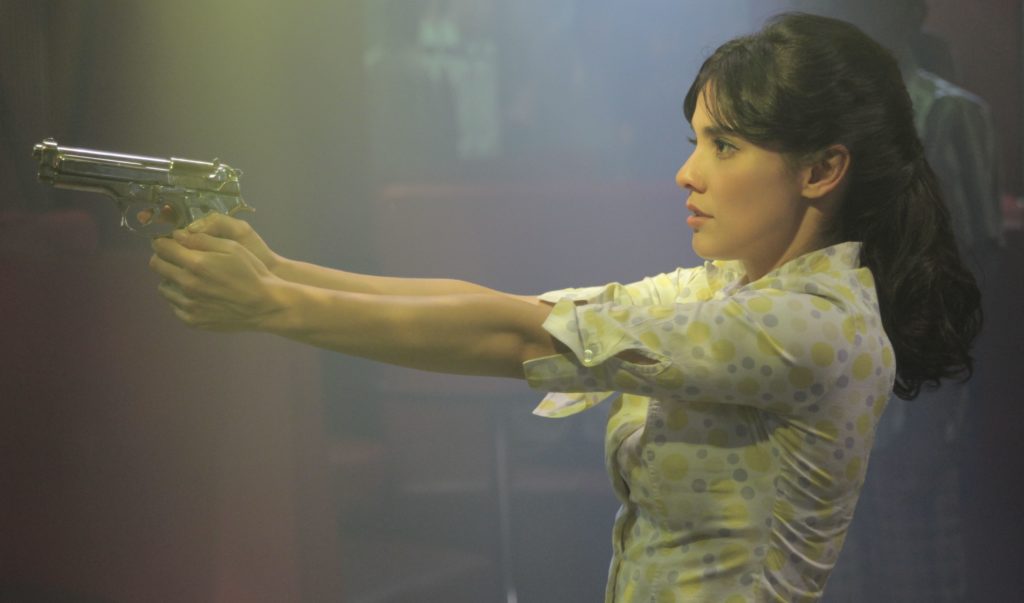 So, jail on both sides. But this is where the stories really start to diverge. In reality, she served 13 years in New York for cocaine smuggling, then was shipped to Florida where worse trouble awaited. For hitman ‘Rivi’ had turned stool-pigeon, and with his testimony linking her to literally dozens of murders, the death penalty loomed large. However, his testimony was largely discredited after a bizarre scandal in which he was shown to have paid secretaries at the Miami-Dade State Attorney’s Office for phone sex. In the end, prosecutors had to settle for lesser charges; Blanco got 20 years, and was released after only seven, returning to Colombia at the end of her sentence in 2004. The day she left, ‘Rivi’ was stabbed eight times in Dade County jail.
So, jail on both sides. But this is where the stories really start to diverge. In reality, she served 13 years in New York for cocaine smuggling, then was shipped to Florida where worse trouble awaited. For hitman ‘Rivi’ had turned stool-pigeon, and with his testimony linking her to literally dozens of murders, the death penalty loomed large. However, his testimony was largely discredited after a bizarre scandal in which he was shown to have paid secretaries at the Miami-Dade State Attorney’s Office for phone sex. In the end, prosecutors had to settle for lesser charges; Blanco got 20 years, and was released after only seven, returning to Colombia at the end of her sentence in 2004. The day she left, ‘Rivi’ was stabbed eight times in Dade County jail.
The TV series compacts the nineteen years Blanco really spent behind bars, in two separate sentences, into one period in New York alone. These 18 episodes add additional, entirely spurious aspects such as Griselda being forced to engage in cage fights (!) with other inmates, or her being attacked by guards, and getting revenge by setting them on fire. There are a couple of aspects one might call ‘somewhat true’. There was a plan hatched to kidnap the son of John F. Kennedy and exchange him for Blanco, though it never came as close to success as depicted in the telenovela. And while it is true that a man struck up a relationship by writing to her while she was inside, Charles Cosby was not the undercover DEA agent, portrayed as “Tyler” in the TV version.
 Certainly, there’s major dramatic license in Blanco’s departure from prison. Rather than just reaching the end of her sentence, there’s a dramatic escape from literally being in the electric chair [which is odd, since no-one has been executed in New York state since 1963, and no woman since Martha Jule Beck in 1951]. Using a drug which gives the impression of death, allows her gang to break her out by ambulance (Episode 44). From there she returns to Colombia, and only at this point, does Blanco cross paths with the most notorious drug-lord of them all, Pablo Escovar. However, it appears they knew each other far longer. Some sources say they were childhood friends, others that he was Griselda’s “great apprentice,” and there are even salacious whispers they were lovers.
Certainly, there’s major dramatic license in Blanco’s departure from prison. Rather than just reaching the end of her sentence, there’s a dramatic escape from literally being in the electric chair [which is odd, since no-one has been executed in New York state since 1963, and no woman since Martha Jule Beck in 1951]. Using a drug which gives the impression of death, allows her gang to break her out by ambulance (Episode 44). From there she returns to Colombia, and only at this point, does Blanco cross paths with the most notorious drug-lord of them all, Pablo Escovar. However, it appears they knew each other far longer. Some sources say they were childhood friends, others that he was Griselda’s “great apprentice,” and there are even salacious whispers they were lovers.
So any connection to fact in the show has now evaporated entirely. By this point, the real Griselda Blanco was in her sixties, and suffering badly from the effects of her life of excess – according to reports, “Court records show Blanco was a drug addict who consumed vast quantities of ‘bazooka,’ a potent form of smokeable, unrefined cocaine… would force men and women to have sex at gunpoint, and had frequent bisexual orgies.” After her release, she apparently lived quietly in Medellin. But it wasn’t enough to save her from a violent end. In September 2012, she was killed outside a butcher’s shop – ironically, in a motorcycle drive-by, the style of assassination she had pioneered and which became one of her trademarks.
This is as good a place as any, to mention the remarkably straight-edge depiction of Blanco in the telenovela. Unlike the sex- and drug-fiend described above, teleGriselda never gets high on her own supply, and is strictly monogamous – when anyone can get past her trust issues, that is. That’s something which I also noticed about La Reina Del Sur – and the Mexican TV version was radically different from the American one, where the heroine was not averse to powdering her nose now and again. It’s an odd version of morality, considering how there’s apparently no problem with her being directly and indirectly responsible for the deaths of dozens of people. “Yeah, but they were all bad,” to borrow a line from True Lies.
In the television version, however, she returns to business back on home turf. But there’s a problem, in the shape of Otalvaro. He’s another Colombian drug-runner, who holds a grudge against Blanco because she ordered the execution of his niece in her New York days – albeit for business rather than personal reasons. He teams up with Susana, another character apparently created for the show. She’s a Florida real-estate agent, who becomes part of Griselda’s crew, and is also a lesbian who has a long-time secret affection for her. When her hopes are crushed, she turns bitter, joining forces with Otalvaro, and tangentially, Escobar. Otalvaro’s daughter, Karla, meanwhile, goes the other way, falling for Michael Blanco after Otalvaro kidnaps him; she helps him escape and becomes part of Griselda’s crew.
In truth, these later episodes are less interesting, largely because the focus is so diluted – it gets away from Griselda, rather than focusing on her, as it should since she’s the most interesting character. I haven’t even mentioned Silvio, who betrays Griselda and tries to steal a submarine (!) packed with cocaine. He then gets miffed after she orders the death of his girlfriend, and begins his own, independent plot to take revenge on the family. Also still rattling around Medellin in the later stages is Jones, the series’s version of Bob Palumbo. He isn’t just chasing after her, he also ends up falling in love and prepared to do anything for her. Throw in his son and a renegade colleague, Garcia, prepared to go to any lengths to capture Griselda, and you’ll understand why it feels the writers are going for volume over quality in their storyline elements by the end.
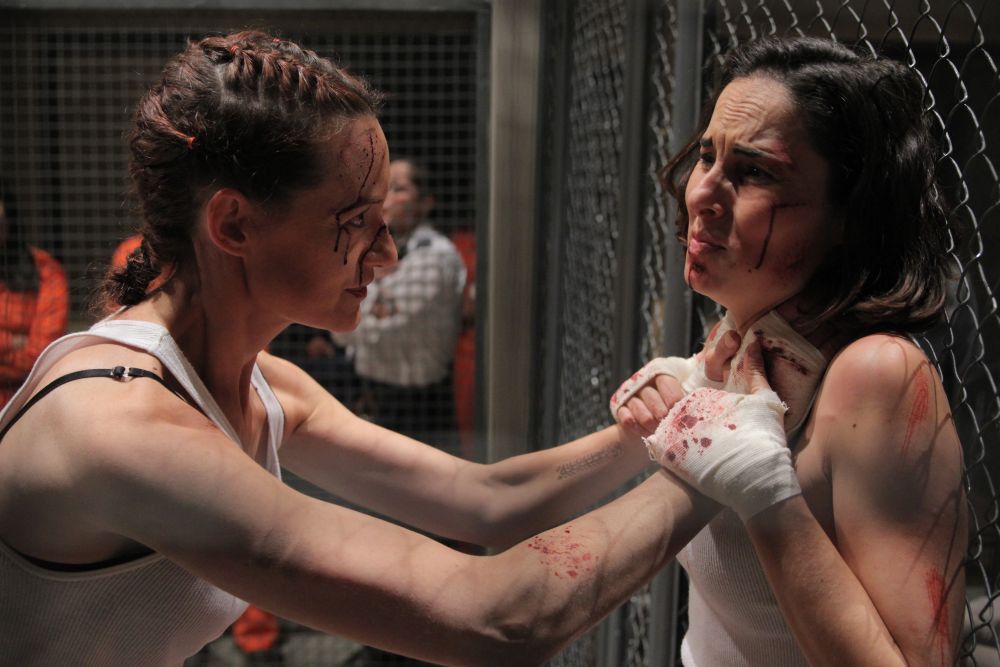 But it’s at the end the story diverts furthest from reality. Instead of having Griselda gunned down in the street by an unknown adversary, she and her longest lasting and most faithful ally, Richi (Román), are trapped in a cold-storage room. Rather than surrender, or be captured by their enemies, legal or otherwise, they agree to a mutual suicide pact. The screen goes black, we hear the sound of gunfire, and the series ends. But mere mortality is no match for the demands of audience ratings. And so, two years later, the show began its second season, with a further 63 episodes detailing the further adventures of Griselda Blanco. The fictional version of the character appears to be even harder to kill than her real-life inspiration.
But it’s at the end the story diverts furthest from reality. Instead of having Griselda gunned down in the street by an unknown adversary, she and her longest lasting and most faithful ally, Richi (Román), are trapped in a cold-storage room. Rather than surrender, or be captured by their enemies, legal or otherwise, they agree to a mutual suicide pact. The screen goes black, we hear the sound of gunfire, and the series ends. But mere mortality is no match for the demands of audience ratings. And so, two years later, the show began its second season, with a further 63 episodes detailing the further adventures of Griselda Blanco. The fictional version of the character appears to be even harder to kill than her real-life inspiration.
We’ll get round to watching that series in a bit, but after this 81-part marathon, I’m inclined to take a bit of a break! It wasn’t a bad show, and never became a chore: Serradilla is solid in the central role, and I also enjoyed Gamboa’s performance. But as noted, it did appear to lose focus as it went on, and did appear to be over-stretching its material. However, it will provide a useful template, against which other adaptations can be measured. For there are at least two competing Hollywood projects in various stages of production: one starring Catherine Zeta-Jones and the other, Jennifer Lopez. As and when those arrive on our screen, we can see how they compare to the extended version, offered by this telenovela.
Star: Ana Serradilla, Juan Pablo Gamboa, Julián Román, Ramiro Meneses
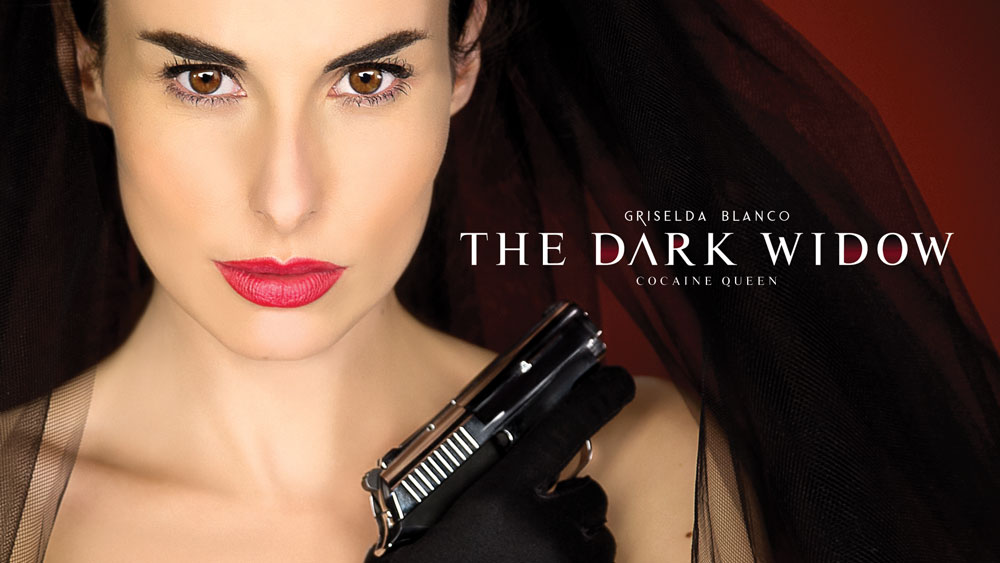
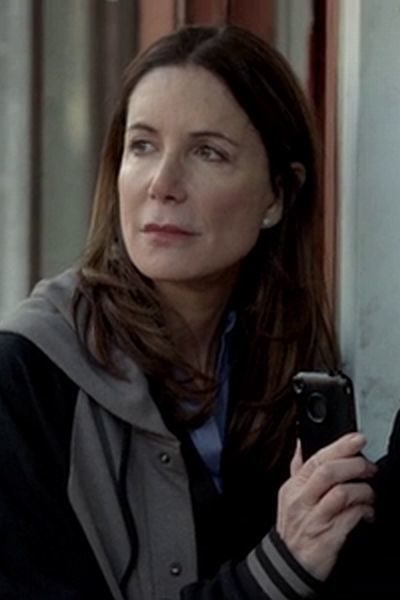 Ann Willis (Robbins) is a single mother, working as a waitress and trying to keep family together after the death of her husband from lung cancer. To help out, son David (Abrahamson) abandons his plans to attend college and gets a job in a local factory. But he falls in with some questionable company there and, lured by the prospect of easy money, starts dealing drugs for the local mobsters, run by Canarsie. Things go from bad to worse after his supposed “friend” Mike (Falahee) frames him for the disappearance of some product, and things end with David’s dead body floating in the river, having been beaten to death by his associates. The cops, and in particular, Detective Frank Hogan (Baldwin), investigate – but to be honest, aren’t particularly interested in one drug-dealer being killed.
Ann Willis (Robbins) is a single mother, working as a waitress and trying to keep family together after the death of her husband from lung cancer. To help out, son David (Abrahamson) abandons his plans to attend college and gets a job in a local factory. But he falls in with some questionable company there and, lured by the prospect of easy money, starts dealing drugs for the local mobsters, run by Canarsie. Things go from bad to worse after his supposed “friend” Mike (Falahee) frames him for the disappearance of some product, and things end with David’s dead body floating in the river, having been beaten to death by his associates. The cops, and in particular, Detective Frank Hogan (Baldwin), investigate – but to be honest, aren’t particularly interested in one drug-dealer being killed.




 Lance Charnes and I are Goodreads friends, having “met” (electronically) a few years ago through the Action Heroine Fans group. Some time ago, I bought a copy of his outstanding debut novel, Doha 12, and it got five stars from me. This new novel, the opener for a projected series, didn’t come to me as an official review copy –instead, Lance generously donated a print copy to the library where I work– but he knew I would read and review it, and knew my tastes well enough to be pretty sure I’d like it. Of course, we both understood that he might be wrong –but he wasn’t! For much of my reading experience, I expected to rate the book four stars –a denouement and conclusion that blew me to pieces and then knit me back together easily pushed it up to five stars.
Lance Charnes and I are Goodreads friends, having “met” (electronically) a few years ago through the Action Heroine Fans group. Some time ago, I bought a copy of his outstanding debut novel, Doha 12, and it got five stars from me. This new novel, the opener for a projected series, didn’t come to me as an official review copy –instead, Lance generously donated a print copy to the library where I work– but he knew I would read and review it, and knew my tastes well enough to be pretty sure I’d like it. Of course, we both understood that he might be wrong –but he wasn’t! For much of my reading experience, I expected to rate the book four stars –a denouement and conclusion that blew me to pieces and then knit me back together easily pushed it up to five stars.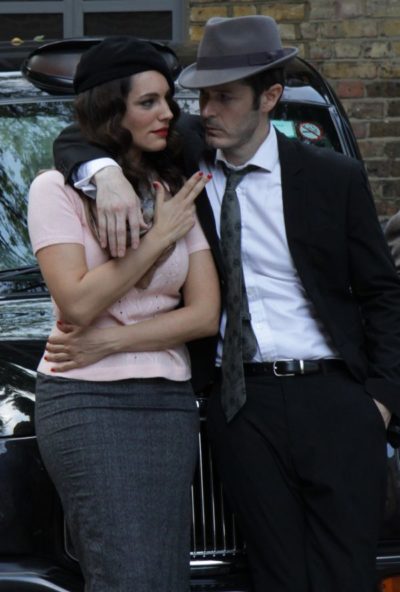 Kate’s (Brook) life has fallen apart: she has just been told the store she works at is closing because the owner is cashing in on a redevelopment offer; her boyfriend has dumped her; and Kate’s attempt at suicide by gas oven is doomed since she failed to pay the bill. What’s a girl to do? The answer is apparently, take inspiration from her heroine, Bonnie Parker. But rather than robbing banks, Kate teams up with her other disgruntled work colleagues, hatching a daring plan to copy the key to the store, seduce the safe combination out of the firm’s accountant, Mat (Williams) and plunder the ill-gotten gains.
Kate’s (Brook) life has fallen apart: she has just been told the store she works at is closing because the owner is cashing in on a redevelopment offer; her boyfriend has dumped her; and Kate’s attempt at suicide by gas oven is doomed since she failed to pay the bill. What’s a girl to do? The answer is apparently, take inspiration from her heroine, Bonnie Parker. But rather than robbing banks, Kate teams up with her other disgruntled work colleagues, hatching a daring plan to copy the key to the store, seduce the safe combination out of the firm’s accountant, Mat (Williams) and plunder the ill-gotten gains.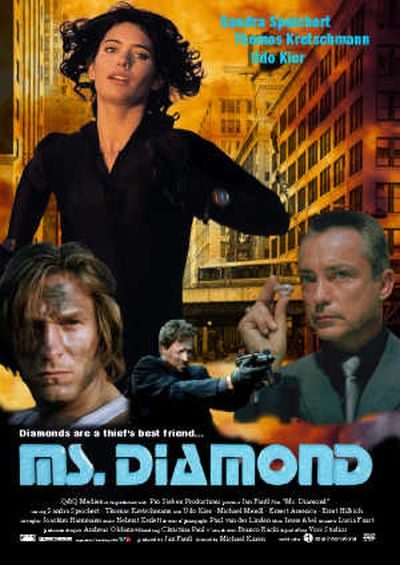 There’s an exhibition showcasing the first diamonds ever mined in Germany, dug up by the company belonging to Buhler (Kier). Keeping thing safe is the responsibility of security expert Tim (Kretschmann), who doesn’t realize that renowned jewel thief Lana (Speichert) has her eyes on the jewels. So they’re both in for a nasty surprise, because after Lana is caught by Tim in the process of stealing them, it turns out the diamonds are completely fake. Buhler gives her an ultimatum: Lana must find the real diamonds, or she’ll be handed over to the police, and to ensure she doesn’t just run off, tasks Tim with keeping an eye on her. It soon becomes clear, though, that there is more to the mystery than there appears initially, and someone is very keen to stop them from getting to the truth.
There’s an exhibition showcasing the first diamonds ever mined in Germany, dug up by the company belonging to Buhler (Kier). Keeping thing safe is the responsibility of security expert Tim (Kretschmann), who doesn’t realize that renowned jewel thief Lana (Speichert) has her eyes on the jewels. So they’re both in for a nasty surprise, because after Lana is caught by Tim in the process of stealing them, it turns out the diamonds are completely fake. Buhler gives her an ultimatum: Lana must find the real diamonds, or she’ll be handed over to the police, and to ensure she doesn’t just run off, tasks Tim with keeping an eye on her. It soon becomes clear, though, that there is more to the mystery than there appears initially, and someone is very keen to stop them from getting to the truth.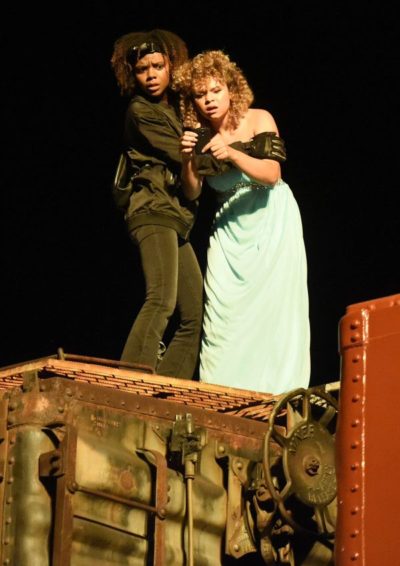 After their mother has a meltdown at her job and ends up in jail: teenage sisters Deidra (Murray) and Laney (Crow, somewhat infamous for her post-elimination meltdown on The X Factor) are left to fend for themselves. With household bills piling up – never mind trying to fund Mom’s bail, or even Deidra’s long dreamed-of college tuition – and Child Protective Services looming, things look bleak. But a visit to deadbeat Dad Chet (Sullivan, channeling David Spade), who works for a railway company, gives Deidra an idea. Hop aboard the freight trains that run by the back of their house, pop open a container to take some goods, and fence them on for cash. Things go surprisingly well, until a disgruntled railroad cop, Truman (Nelson), starts to close in on the pair, intent on rebuilding his reputation after an incident in Arizona.
After their mother has a meltdown at her job and ends up in jail: teenage sisters Deidra (Murray) and Laney (Crow, somewhat infamous for her post-elimination meltdown on The X Factor) are left to fend for themselves. With household bills piling up – never mind trying to fund Mom’s bail, or even Deidra’s long dreamed-of college tuition – and Child Protective Services looming, things look bleak. But a visit to deadbeat Dad Chet (Sullivan, channeling David Spade), who works for a railway company, gives Deidra an idea. Hop aboard the freight trains that run by the back of their house, pop open a container to take some goods, and fence them on for cash. Things go surprisingly well, until a disgruntled railroad cop, Truman (Nelson), starts to close in on the pair, intent on rebuilding his reputation after an incident in Arizona.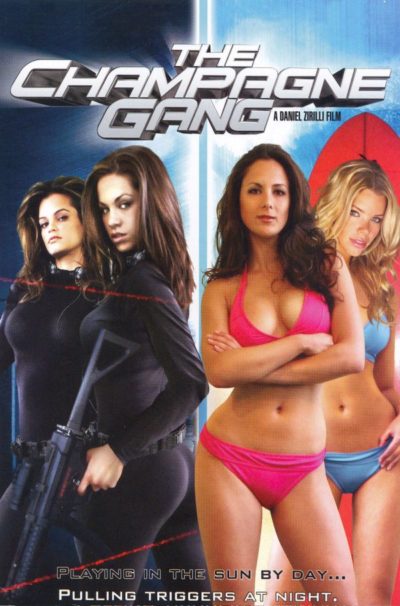 Under the leadership of Bliss (Toups), whose father is serving an extended stretch in jail, four young women stage a series of convenience-store burglaries in the San Diego area, before moving up to larger schemes. This brings them to the attention of local crime-boss, Cal Wertlieb, who makes them an offer they can’t refuse. He’ll train them to carry out more lucrative jobs, by cracking safes, which will give them access to cash and other easily fungible loot, in exchange for a cut of the proceeds – and their absolute silence in the event of them ever being caught by the authorities.
Under the leadership of Bliss (Toups), whose father is serving an extended stretch in jail, four young women stage a series of convenience-store burglaries in the San Diego area, before moving up to larger schemes. This brings them to the attention of local crime-boss, Cal Wertlieb, who makes them an offer they can’t refuse. He’ll train them to carry out more lucrative jobs, by cracking safes, which will give them access to cash and other easily fungible loot, in exchange for a cut of the proceeds – and their absolute silence in the event of them ever being caught by the authorities. The young Griselda Blanco: real (left) and telenovela versions.
The young Griselda Blanco: real (left) and telenovela versions. A focus of the early episodes sees Blanco joining a gang, which then kidnaps the scion of a rich local family. In the telenovela, this kick-starts her career, because the victim dies, and his father vows vengeance on Griselda, forcing her to go on the run as a young adult. The reality is perhaps even more astonishing, with her former lover, Charles Cosby, reporting that the kidnap and murder took place when Blanco was only eleven years old. After the boy’s parents refused to pay up, the frustrated gang gave her a revolver and challenged her to shoot him in the head. Challenge accepted…
A focus of the early episodes sees Blanco joining a gang, which then kidnaps the scion of a rich local family. In the telenovela, this kick-starts her career, because the victim dies, and his father vows vengeance on Griselda, forcing her to go on the run as a young adult. The reality is perhaps even more astonishing, with her former lover, Charles Cosby, reporting that the kidnap and murder took place when Blanco was only eleven years old. After the boy’s parents refused to pay up, the frustrated gang gave her a revolver and challenged her to shoot him in the head. Challenge accepted… So, jail on both sides. But this is where the stories really start to diverge. In reality, she served 13 years in New York for cocaine smuggling, then was shipped to Florida where worse trouble awaited. For hitman ‘Rivi’ had turned stool-pigeon, and with his testimony linking her to literally dozens of murders, the death penalty loomed large. However, his testimony was largely discredited after a
So, jail on both sides. But this is where the stories really start to diverge. In reality, she served 13 years in New York for cocaine smuggling, then was shipped to Florida where worse trouble awaited. For hitman ‘Rivi’ had turned stool-pigeon, and with his testimony linking her to literally dozens of murders, the death penalty loomed large. However, his testimony was largely discredited after a  Certainly, there’s major dramatic license in Blanco’s departure from prison. Rather than just reaching the end of her sentence, there’s a dramatic escape from literally being in the electric chair [which is odd, since no-one has been executed in New York state since 1963, and no woman since Martha Jule Beck in 1951]. Using a drug which gives the impression of death, allows her gang to break her out by ambulance (Episode 44). From there she returns to Colombia, and only at this point, does Blanco cross paths with the most notorious drug-lord of them all, Pablo Escovar. However, it appears they knew each other far longer. Some sources
Certainly, there’s major dramatic license in Blanco’s departure from prison. Rather than just reaching the end of her sentence, there’s a dramatic escape from literally being in the electric chair [which is odd, since no-one has been executed in New York state since 1963, and no woman since Martha Jule Beck in 1951]. Using a drug which gives the impression of death, allows her gang to break her out by ambulance (Episode 44). From there she returns to Colombia, and only at this point, does Blanco cross paths with the most notorious drug-lord of them all, Pablo Escovar. However, it appears they knew each other far longer. Some sources  But it’s at the end the story diverts furthest from reality. Instead of having Griselda gunned down in the street by an unknown adversary, she and her longest lasting and most faithful ally, Richi (Román), are trapped in a cold-storage room. Rather than surrender, or be captured by their enemies, legal or otherwise, they agree to a mutual suicide pact. The screen goes black, we hear the sound of gunfire, and the series ends. But mere mortality is no match for the demands of audience ratings. And so, two years later, the show began its second season, with a further 63 episodes detailing the further adventures of Griselda Blanco. The fictional version of the character appears to be even harder to kill than her real-life inspiration.
But it’s at the end the story diverts furthest from reality. Instead of having Griselda gunned down in the street by an unknown adversary, she and her longest lasting and most faithful ally, Richi (Román), are trapped in a cold-storage room. Rather than surrender, or be captured by their enemies, legal or otherwise, they agree to a mutual suicide pact. The screen goes black, we hear the sound of gunfire, and the series ends. But mere mortality is no match for the demands of audience ratings. And so, two years later, the show began its second season, with a further 63 episodes detailing the further adventures of Griselda Blanco. The fictional version of the character appears to be even harder to kill than her real-life inspiration.

























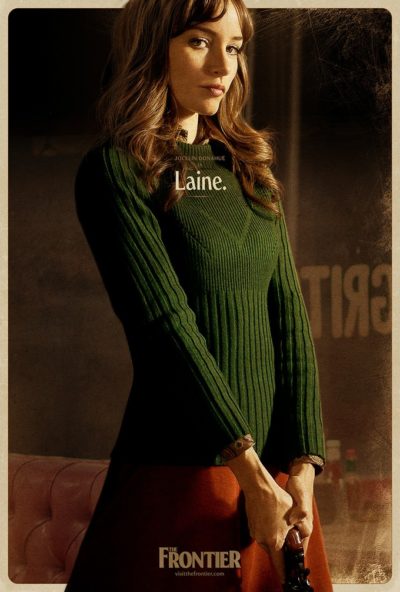 Laine (Donahue) is on the run. From what isn’t immediately clear, but it seems to be something to do with the death of an oil executive. Whatever the reason, she’s staying off the highways and keeping to the back roads. One morning, she wakes up beside The Frontier, a diner/motel owned and operated by Luanne (Lynch), who offers Laine employment, in return for board and lodging. Laine initially rejects the offer, then discovers some other guests are apparently there in the aftermath of an armoured car robbery, which netted them two million dollars. Laine therefore decides it’s in her best interests to stick around, and begins a game of chess with the perpetrators, to see if she can end up walking away with their ill-gotten gains.
Laine (Donahue) is on the run. From what isn’t immediately clear, but it seems to be something to do with the death of an oil executive. Whatever the reason, she’s staying off the highways and keeping to the back roads. One morning, she wakes up beside The Frontier, a diner/motel owned and operated by Luanne (Lynch), who offers Laine employment, in return for board and lodging. Laine initially rejects the offer, then discovers some other guests are apparently there in the aftermath of an armoured car robbery, which netted them two million dollars. Laine therefore decides it’s in her best interests to stick around, and begins a game of chess with the perpetrators, to see if she can end up walking away with their ill-gotten gains. It kinda works, mostly for the dynamics between the trio of leading ladies. At first, Cali’s approach seems sensible, arguably a legitimate way to make the best of a bad situation. However, a change in the scenario shifts things seismically, and even the toughest of her supporters would have to admit an unpleasant streak of psychopathy is opened in her make-up. Evil sometimes wears a pretty face, and Turshen reminded me more than a little of Denise Richards in Wild Things – manipulative and . Less successful, to the point of entire irrelevance, is the boyfriend who shows up and yells for a bit. I suspect, given the slight running time of 75 minutes, his presence may have been a late-added necessity in order to reach feature length.
It kinda works, mostly for the dynamics between the trio of leading ladies. At first, Cali’s approach seems sensible, arguably a legitimate way to make the best of a bad situation. However, a change in the scenario shifts things seismically, and even the toughest of her supporters would have to admit an unpleasant streak of psychopathy is opened in her make-up. Evil sometimes wears a pretty face, and Turshen reminded me more than a little of Denise Richards in Wild Things – manipulative and . Less successful, to the point of entire irrelevance, is the boyfriend who shows up and yells for a bit. I suspect, given the slight running time of 75 minutes, his presence may have been a late-added necessity in order to reach feature length.